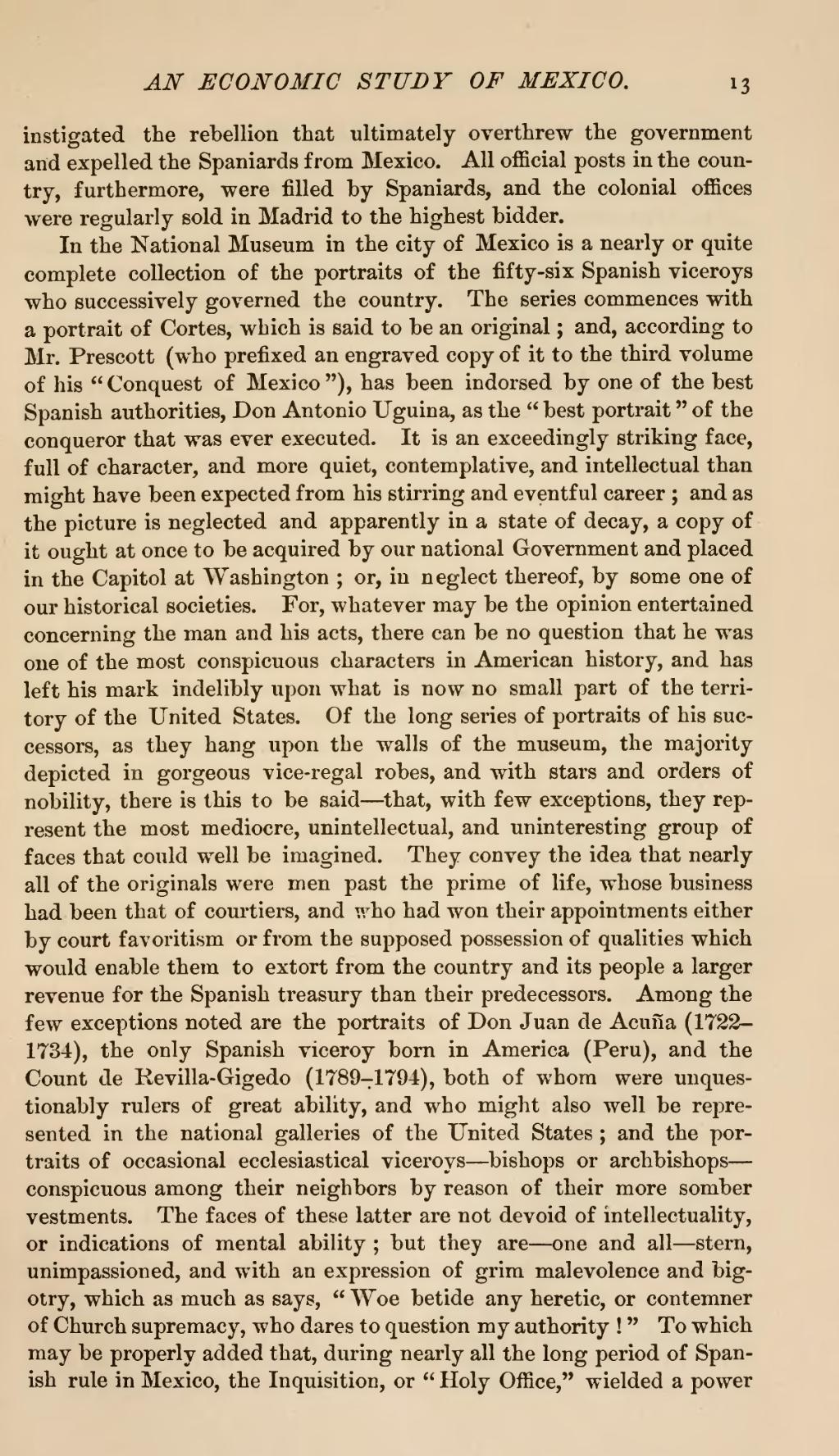instigated the rebellion that ultimately overthrew the government and expelled the Spaniards from Mexico. All official posts in the country, furthermore, were filled by Spaniards, and the colonial offices were regularly sold in Madrid to the highest bidder.
In the National Museum in the city of Mexico is a nearly or quite complete collection of the portraits of the fifty-six Spanish viceroys who successively governed the country. The series commences with a portrait of Cortes, which is said to be an original; and, according to Mr. Prescott (who prefixed an engraved copy of it to the third volume of his "Conquest of Mexico"), has been indorsed by one of the best Spanish authorities, Don Antonio Uguina, as the "best portrait" of the conqueror that was ever executed. It is an exceedingly striking face, full of character, and more quiet, contemplative, and intellectual than might have been expected from his stirring and eventful career; and as the picture is neglected and apparently in a state of decay, a copy of it ought at once to be acquired by our national Government and placed in the Capitol at Washington; or, in neglect thereof, by some one of our historical societies. For, whatever may be the opinion entertained concerning the man and his acts, there can be no question that he was one of the most conspicuous characters in American history, and has left his mark indelibly upon what is now no small part of the territory of the United States. Of the long series of portraits of his successors, as they hang upon the walls of the museum, the majority depicted in gorgeous vice-regal robes, and with stars and orders of nobility, there is this to be said—that, with few exceptions, they represent the most mediocre, unintellectual, and uninteresting group of faces that could well be imagined. They convey the idea that nearly all of the originals were men past the prime of life, whose business had been that of courtiers, and who had won their appointments either by court favoritism or from the supposed possession of qualities which would enable them to extort from the country and its people a larger revenue for the Spanish treasury than their predecessors. Among the few exceptions noted are the portraits of Don Juan de Acuña (1722-1734), the only Spanish viceroy born in America (Peru), and the Count de Revilla-Gigedo (1789-1794), both of whom were unquestionably rulers of great ability, and who might also well be represented in the national galleries of the United States; and the portraits of occasional ecclesiastical viceroys—bishops or archbishops—conspicuous among their neighbors by reason of their more somber vestments. The faces of these latter are not devoid of intellectuality, or indications of mental ability; but they are—one and all—stern, unimpassioned, and with an expression of grim malevolence and bigotry, which as much as says, "Woe betide any heretic, or contemnerof Church supremacy, who dares to question my authority!" To which may be properly added that, during nearly all the long period of Spanish rule in Mexico, the Inquisition, or "Holy Office," wielded a power
